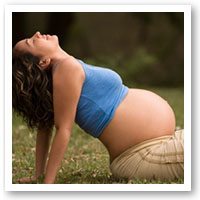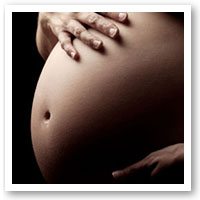Posts
Acupuncture and Later Pregnancy & Birth Preparation
/in Acupuncture /by AndrewS o you’re counting down the months (or even weeks or days) till you can meet the newest member of your family. This time should be all about nesting and preparing, but that’s hard to do if you are feeling exhausted by some of the conditions that can arise in late pregnancy. When these problems are severe, they can really detract from the experience of being pregnant. Issues that tend to flare up at this stage of the pregnancy include:
o you’re counting down the months (or even weeks or days) till you can meet the newest member of your family. This time should be all about nesting and preparing, but that’s hard to do if you are feeling exhausted by some of the conditions that can arise in late pregnancy. When these problems are severe, they can really detract from the experience of being pregnant. Issues that tend to flare up at this stage of the pregnancy include:
- Swollen ankles, fingers and wrists (can lead to carpal tunnel syndrome)
- Iron-deficiency anaemia
- Indigestion, acid reflux
- Varicose veins
- Haemorrhoids
- Back pain, sciatica, as baby’s head presses on the nerves exiting the spinal column
- Pubic symphysitis
- Insomnia
Easing late pregnancy complaints with Acupuncture.
Thankfully, most of these issues tend to respond well to Acupuncture. You’ve probably already heard of the benefits of Acupuncture in back pain and sciatica, as well as aches and pains like carpal tunnel syndrome. I also use specific Acupuncture points to reduce water retention and aid fluid metabolism, improve indigestion, and ease the discomfort associated with swollen veins and haemorrhoids. Other points can help you sleep or to help nourish the blood (to combat anaemia). These are combined with points selected for your individual constitution and any other symptoms you might be experiencing. The overall result is a very relaxing experience that should help settle your discomfort and support you as your pregnancy advances.
I find that with some of these conditions, especially pubic symphysitis, but also back pain and sciatica, the best results are achieved with a combination of Acupuncture and Chiropractic.
Other issues in late pregnancy that are less common include:
- Breech baby (head-up rather than the normal head-down position), and other positions not ideal for labour, such as posterior.
- High blood pressure (pregnancy-induced hypertension or pre-eclampsia),
- High blood sugar levels (gestational diabetes)
- Complications of pregnancy like a low-lying placenta (placenta praevia).
Let’s look at how Acupuncture can help these complications.
Breech and other positions not ideal for labour.
If your baby is in breech position, its bottom or feet would be delivered first if you went into labour. Some obstetricians are confident in delivering breech babies. But because complications can occur, most will attempt to physically turn the baby (external cephalic version) if this is possible. If it doesn’t work, the usual advice is to have a Caesarean section, but this is not without its risks and complications. Apart from issues with labour, a prolonged period in some types of breech position can also lead to problems with baby’s hips after birth.
Luckily, there is an alternative. At around 33-34 weeks, Acupuncturists use a specific point on the big toe, which is not needled but instead heated with moxa (a processed form of the herb Artemisia or Mugwort). You continue this treatment at home for 1-2 weeks. The moxibustion stimulates fetal movement, encouraging the baby to move itself into the normal head-down position. This form of treatment has been evaluated by research — it led to the baby turning in about 75% of cases (as a comparison, less than 50% of babies turned by themselves in women who did not have moxibustion treatment). No harmful effects were noted. There is another advantage of this approach. Because we are intervening relatively early in the pregnancy (compared with an external cephalic version at 37-38 weeks), if the moxibustion is successful, the baby is in the breech position for a shorter period, so we’d anticipate less chance of damage to the hips.
The best position for the baby to be born in is head-down, with the chin tucked right down into the chest, and in the head in the anterior position. This means that the back of baby’s head is directly under your pubic bone. This makes for a smoother birth. It is also more efficient, meaning you won’t get as tired during labour because the baby is already lined up correctly. Some babies don’t naturally adopt this position, but instead have their heads the other way up so that their forehead is directly below your pubic bone. This can lead to a longer, more tiring labour, with a lot of back pain, as the baby rotates into the anterior position (this does not always happen – the baby can be born in the posterior position, but this is not common).
We use a similar moxibustion technique if the baby is posterior, coupled with exercises to try and get gravity to work in your favour in encouraging baby to turn anterior.
In the following conditions, acupuncturists working with pregnant women have observed improvement in response to Acupuncture. However, little research has been done to back this up.
High blood pressure.
Your midwife or Obstetrician will be keeping a close eye on your blood pressure, because occasionally pregnant women develop a condition where the blood pressure rises out of control (and other problems develop). This is called pre-eclampsia and poses risks to the health of yourself and the baby.
While women with severe pre-eclampsia need to be hospitalised for monitoring and treatment, Acupuncture can be useful if there is just a mild increase in blood pressure. It can also help reduce the water retention that can also happen with this condition. Generally, the sooner treatment begins the more likely it is to have results. Of course, ongoing monitoring by your obstetric team is very important.
Gestational diabetes.
It’s normal for blood sugar (glucose) levels to rise slightly in pregnancy, but in some women this happens to the extent that diabetes develops. When severe, this can have complications. The concept of diabetes was recognised by the ancient Chinese, and several Acupuncture points have been proven to promote glucose metabolism and pancreatic function. By using these points, plus others for general wellbeing and the stage of pregnancy, we hope to help normalise glucose levels.
Low-lying placenta.
If your placenta is too low in the uterus, this can cause problems with bleeding later in pregnancy. In severe cases, a vaginal birth is not possible as the placenta obstructs the cervix. This condition often resolves by itself as the uterus enlarges and the placenta naturally rises away from the cervix. But in cases where it does not, we can add in Acupuncture points that have a lifting action according to Chinese Medical theory.
Pre-birth treatment – preparing for labour.
So you’re in the final weeks and no doubt you’ll be thinking about how to ease your passage through labour. Birth preparation Acupuncture is becoming increasingly popular since research has shown its effectiveness. One New Zealand study found that, overall, women who had birth preparation Acupuncture were 35% less likely to need their labour to be medically induced (43% less likely for women having their first baby). Women having these treatments also had a 31% reduction in epidural use.
I prefer to do weekly treatments from about 35 weeks, as the best effects are achieved when you have 4 treatments or more. In these sessions, we gently prepare your body for labour with specific points that act on the cervix and uterus. We also cover acupressure techniques for you or your support person to use during labour that can help you deal with the contractions and help the cervix dilate.
Inducing labour.
There’s no doubt that it’s best for your body to go into labour by itself. We don’t really understand the interplay between the mother and baby that sets off labour, and it’s likely to be complex and involve a cascade of factors. But sometimes, when the pregnancy goes more than a week – 10 days over the due date, then it’s wise to start weighing up the risks and working out a plan of action. In these cases, or when the Obstetrician wants to induce labour for medical reasons, Acupuncture can be very useful in kick-starting the process and potentially avoiding a medical induction. Feedback from midwives in New Zealand who started using Acupuncture in inductions has generally been positive, although the research is certainly not conclusive. In these circumstances, we stimulate points traditionally used to bring on labour, and do several treatments close together, ideally every couple of days.
So enjoy the last months and weeks of your pregnancy, and don’t forget that Acupuncture and Chinese herbal medicine can be great after the birth for promoting healing and dealing with breastfeeding issues like mastitis.
Chiropractic and Pregnancy
/in Chiropractic /by Andrew Your body goes through many changes during pregnancy, and it is amazing at how well it adapts and accommodates for the increasing size of the baby, and then in preparation for the birthing process. Chiropractic can be helpful in several ways as your body goes through these changes.
Your body goes through many changes during pregnancy, and it is amazing at how well it adapts and accommodates for the increasing size of the baby, and then in preparation for the birthing process. Chiropractic can be helpful in several ways as your body goes through these changes.
As the baby grows your body is having to carry more weight which will put some strain on your body especially the lower back. With the increased size of the baby naturally your stomach enlarges which causes your centre of gravity to a more forward position. Then as the baby gets even larger it will often push on different structures of your body, this will commonly affect your ribs, particularly at the front, as they try to accommodate the baby. Then, close to the end of the pregnancy ligaments begin to loosen in preparation for the birth, and this can make the pelvis feel loose and unstable.
All these factors can and often do create some aches and pains, particularly if you have a history of back pain, but they are all things that can be gently treated with Chiropractic. Chiropractic helps by allowing the pelvis, back and ribs to remain mobile, which assists it in smoothly adapting through the process of those changes. as stable as possible. This helps to minimise any aches and pains that occur in this time, and keeps the muscles relaxed and loose. By keeping these joints moving well during pregnancy will make it easier for you to keep active and exercising which can help lead to having an easier labor.
Chiropractic can also help post pregnancy. After giving birth some women can feel very unstable in the pelvis, or they may have a separation and inflammation of the pubic bones. Then breastfeeding and even carrying a baby can often result in upper back and shoulder pain and stiffness. Chiropractic care is very effective in helping your body cope with these new postures and tasks, and generally getting your body back to its healthy and balanced state.
